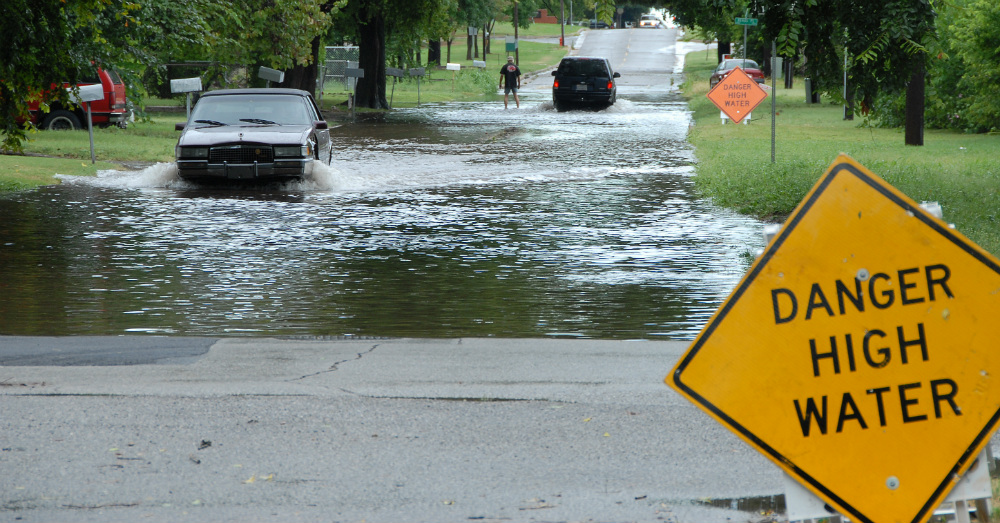In many parts of the country this year has been one of the rainiest on record and has brought on m any challenges when it comes to driving. While many of us might be annoyed that there haven’t been enough sunny days to get out and get the yardwork done there are certainly more important things to be concerned about when it comes to the rain and how it has affected us this year. One of these challenges is the possibility of a flash flood happening, which can cause you and your vehicle to become stuck or even swept away.
There are some rules you need to follow when it comes to water on the road to ensure you can stay safe and keep from becoming a victim to the water. Remember, your vehicle is not made for flowing water which can easily find its way under your tires. Your vehicle is made to keep contact with the ground, but water that moves to the side of your tires can cause your car to lose its contact with the road and then you have no control over what your car is going to do at all.
The first rule to follow is to avoid crossing any water. This is especially the case when the water is flowing like a river or stream. This flow of water is what can cause your vehicle to be picked up and swept away. The current is certainly stronger than your vehicle is. When the entire roadway is covered in water you should turn around and find another way to your destination. It’s never good to try and judge the depth of the water and the Red Cross has reported that more cars are swept away by less than two feet of water than any other depth during a flash flood.
If your vehicle does become surrounded by water and stalls out or starts to move with the current you need to exit the vehicle quickly and get to higher ground. It’s difficult to fight a strong current on foot so you need to be aware and ready to do this as soon as you can. If you don’t feel you can handle the current on foot, stay put and wait for help to arrive rather than becoming a victim of the floodwaters that have started to surround your vehicle.
If you choose to stay inside your vehicle and the water level appears to be rising, roll down the windows and let the water enter your vehicle. Once the water rises to be even with your door you will be able to open the door to escape if the current has slowed or you will be easier to get to when help arrives. Your vehicle is covered by your insurance and is replaceable whereas you are not. Because of this you need to do everything possible to make sure you can keep yourself safe and alive whether the vehicle makes it through the flood or not.
Once the flooding is gone, if you do still have your vehicle you want to get it to a repair shop right away. Even if water did not enter your vehicle you still may have some water damage to the underside and engine compartment of your vehicle. Make sure you let the technicians know that you have been in a flood with your car so they have a better idea of what they need to look for in order to assist you and provide you with the correct repairs. Be careful out there and try and avoid the flash floods that can happen during this extremely rainy season.
This post may contain affiliate links. Meaning a commission is given should you decide to make a purchase through these links, at no cost to you. All products shown are researched and tested to give an accurate review for you.

